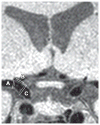The Vanderbilt Memory & Aging Project: Study Design and Baseline Cohort Overview
- PMID: 26967211
- PMCID: PMC4866875
- DOI: 10.3233/JAD-150914
The Vanderbilt Memory & Aging Project: Study Design and Baseline Cohort Overview
Abstract
Background: Vascular health factors frequently co-occur with Alzheimer's disease (AD). A better understanding of how systemic vascular and cerebrovascular health intersects with clinical and pathological AD may inform prevention and treatment opportunities.
Objective: To establish the Vanderbilt Memory & Aging Project, a case-control longitudinal study investigating vascular health and brain aging, and describe baseline methodology and participant characteristics.
Methods: From September 2012 to November 2014, 335 participants age 60- 92 were enrolled, including 168 individuals with mild cognitive impairment (MCI, 73±8 years, 41% female) and 167 age-, sex-, and race-matched cognitively normal controls (NC, 72±7 years, 41% female). At baseline, participants completed a physical and frailty examination, fasting blood draw, neuropsychological assessment, echocardiogram, cardiac MRI, and brain MRI. A subset underwent 24-hour ambulatory blood pressure monitoring and lumbar puncture for cerebrospinal fluid (CSF) collection.
Results: As designed, participant groups were comparable for age (p = 0.31), sex (p = 0.95), and race (p = 0.65). MCI participants had greater Framingham Stroke Risk Profile scores (p = 0.008), systolic blood pressure values (p = 0.008), and history of left ventricular hypertrophy (p = 0.04) than NC participants. As expected, MCI participants performed worse on all neuropsychological measures (p-values < 0.001), were more likely to be APOEɛ4 carriers (p = 0.02), and had enhanced CSF biomarkers, including lower Aβ42 (p = 0.02), higher total tau (p = 0.004), and higher p-tau (p = 0.02) compared to NC participants.
Conclusion: Diverse sources of baseline and longitudinal data will provide rich opportunities to investigate pathways linking vascular and cerebrovascular health, clinical and pathological AD, and neurodegeneration contributing to novel strategies to delay or prevent cognitive decline.
Keywords: Alzheimer’s disease; biomarkers; brain MRI; cardiac MRI; mild cognitive impairment; vascular risk factors.
Figures




Similar articles
-
Design and first baseline data of the DZNE multicenter observational study on predementia Alzheimer's disease (DELCODE).Alzheimers Res Ther. 2018 Feb 7;10(1):15. doi: 10.1186/s13195-017-0314-2. Alzheimers Res Ther. 2018. PMID: 29415768 Free PMC article.
-
Cerebrospinal fluid synaptosomal-associated protein 25 is a key player in synaptic degeneration in mild cognitive impairment and Alzheimer's disease.Alzheimers Res Ther. 2018 Aug 16;10(1):80. doi: 10.1186/s13195-018-0407-6. Alzheimers Res Ther. 2018. PMID: 30115118 Free PMC article.
-
Tau Protein is Associated with Longitudinal Memory Decline in Cognitively Healthy Subjects with Normal Alzheimer's Disease Cerebrospinal Fluid Biomarker Levels.J Alzheimers Dis. 2019;70(1):211-225. doi: 10.3233/JAD-190046. J Alzheimers Dis. 2019. PMID: 31177219
-
Amsterdam Dementia Cohort: Performing Research to Optimize Care.J Alzheimers Dis. 2018;62(3):1091-1111. doi: 10.3233/JAD-170850. J Alzheimers Dis. 2018. PMID: 29562540 Free PMC article. Review.
-
Neuroimaging of Cerebral Small Vessel Disease and Age-Related Cognitive Changes.Front Aging Neurosci. 2019 Jun 27;11:145. doi: 10.3389/fnagi.2019.00145. eCollection 2019. Front Aging Neurosci. 2019. PMID: 31316367 Free PMC article. Review.
Cited by
-
Enlarged perivascular space burden associations with arterial stiffness and cognition.Neurobiol Aging. 2023 Apr;124:85-97. doi: 10.1016/j.neurobiolaging.2022.10.014. Epub 2022 Nov 5. Neurobiol Aging. 2023. PMID: 36446680 Free PMC article.
-
A deep neural network estimation of brain age is sensitive to cognitive impairment and decline.Pac Symp Biocomput. 2024;29:148-162. Pac Symp Biocomput. 2024. PMID: 38160276 Free PMC article.
-
Evaluation of Mean Shift, ComBat, and CycleGAN for Harmonizing Brain Connectivity Matrices Across Sites.ArXiv [Preprint]. 2024 Jan 24:arXiv:2401.06798v2. ArXiv. 2024. Update in: Proc SPIE Int Soc Opt Eng. 2024 Feb;12926:129261X. doi: 10.1117/12.3005563. PMID: 38344221 Free PMC article. Updated. Preprint.
-
Polygenic resilience score may be sensitive to preclinical Alzheimer's disease changes.Pac Symp Biocomput. 2023;28:449-460. Pac Symp Biocomput. 2023. PMID: 36540999 Free PMC article.
-
Lower Cardiac Output Relates to Longitudinal Cognitive Decline in Aging Adults.Front Psychol. 2020 Nov 9;11:569355. doi: 10.3389/fpsyg.2020.569355. eCollection 2020. Front Psychol. 2020. PMID: 33240156 Free PMC article.
References
-
- Hebert LE, Scherr PA, Bienias JL, Bennett DA, Evans DA. Alzheimer disease in the US population: Prevalence estimates using the 2000 census. Arch Neurol. 2003;60:1119–1122. - PubMed
-
- Qiu C, Winblad B, Marengoni A, Klarin I, Fastbom J, Fratiglioni L. Heart failure and risk of dementia and Alzheimer disease: A population-based cohort study. Arch Intern Med. 2006;166:1003–1008. - PubMed
-
- Vogels RL, Oosterman JM, van Harten B, Gouw AA, Schroeder-Tanka JM, Scheltens P, van der Flier WM, Weinstein HC. Neuroimaging and correlates of cognitive function among patients with heart failure. Dement Geriatr Cogn Disord. 2007;24:418–423. - PubMed
Publication types
MeSH terms
Substances
Grants and funding
LinkOut - more resources
Full Text Sources
Other Literature Sources
Medical
Research Materials

